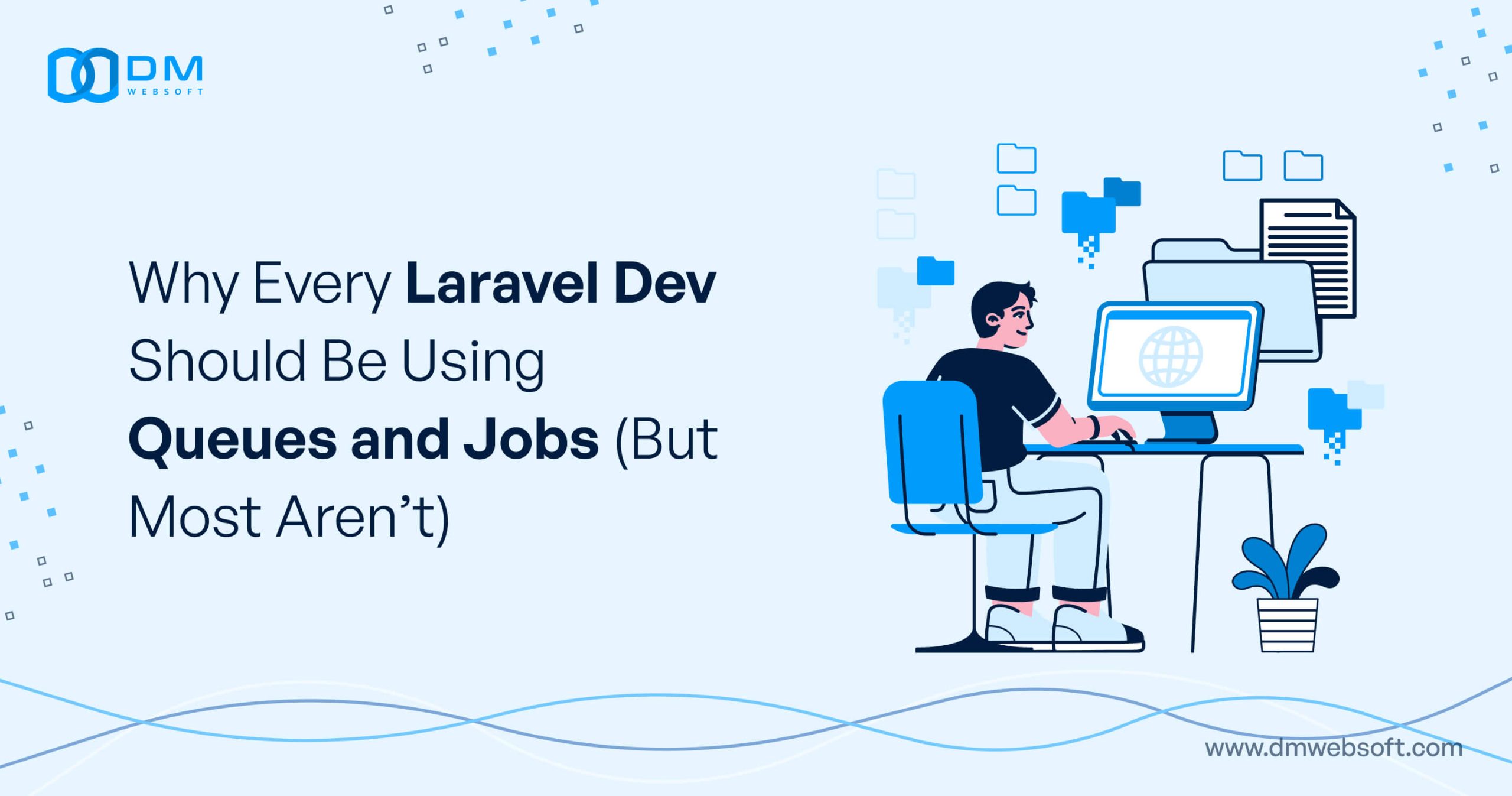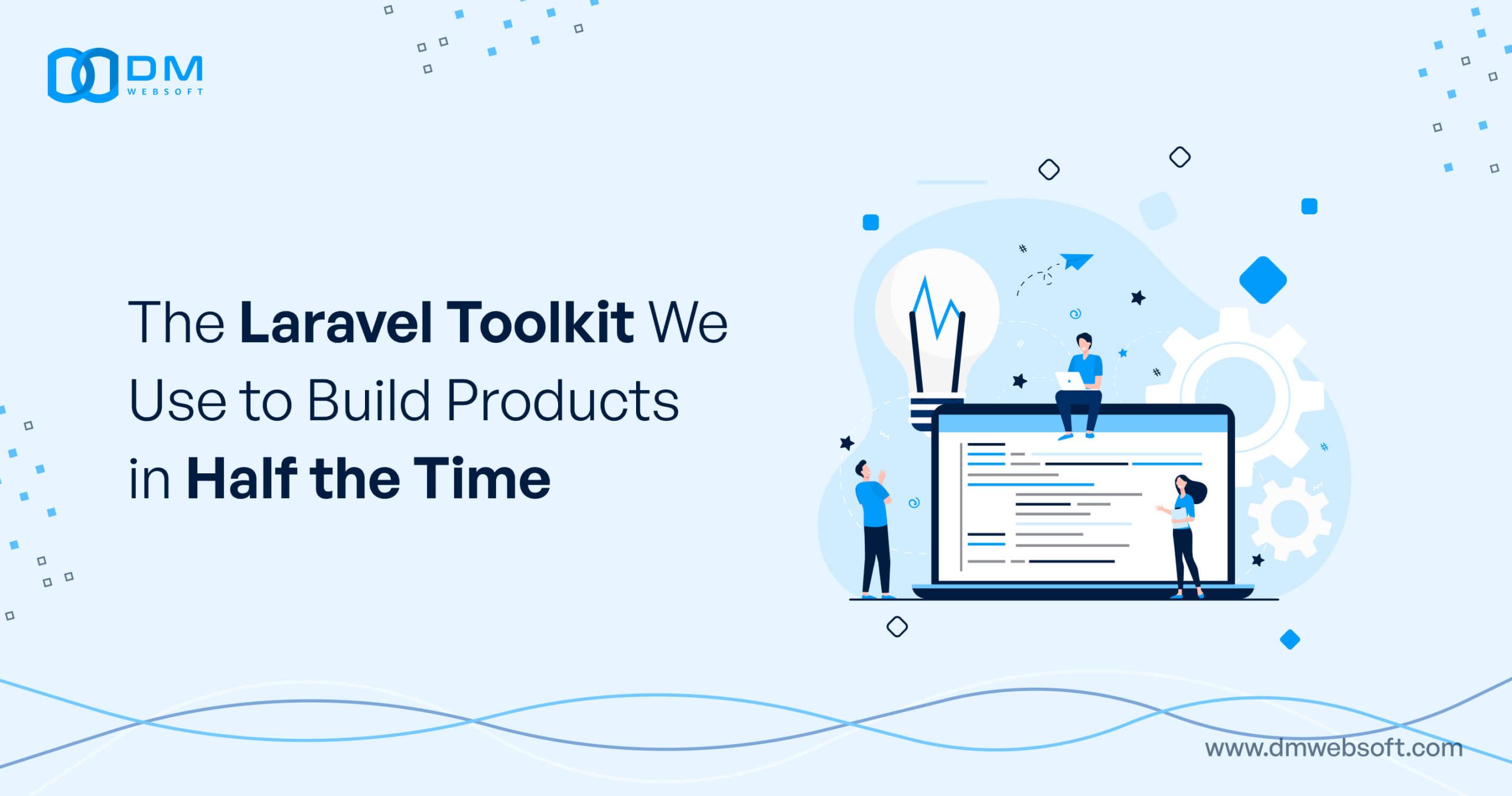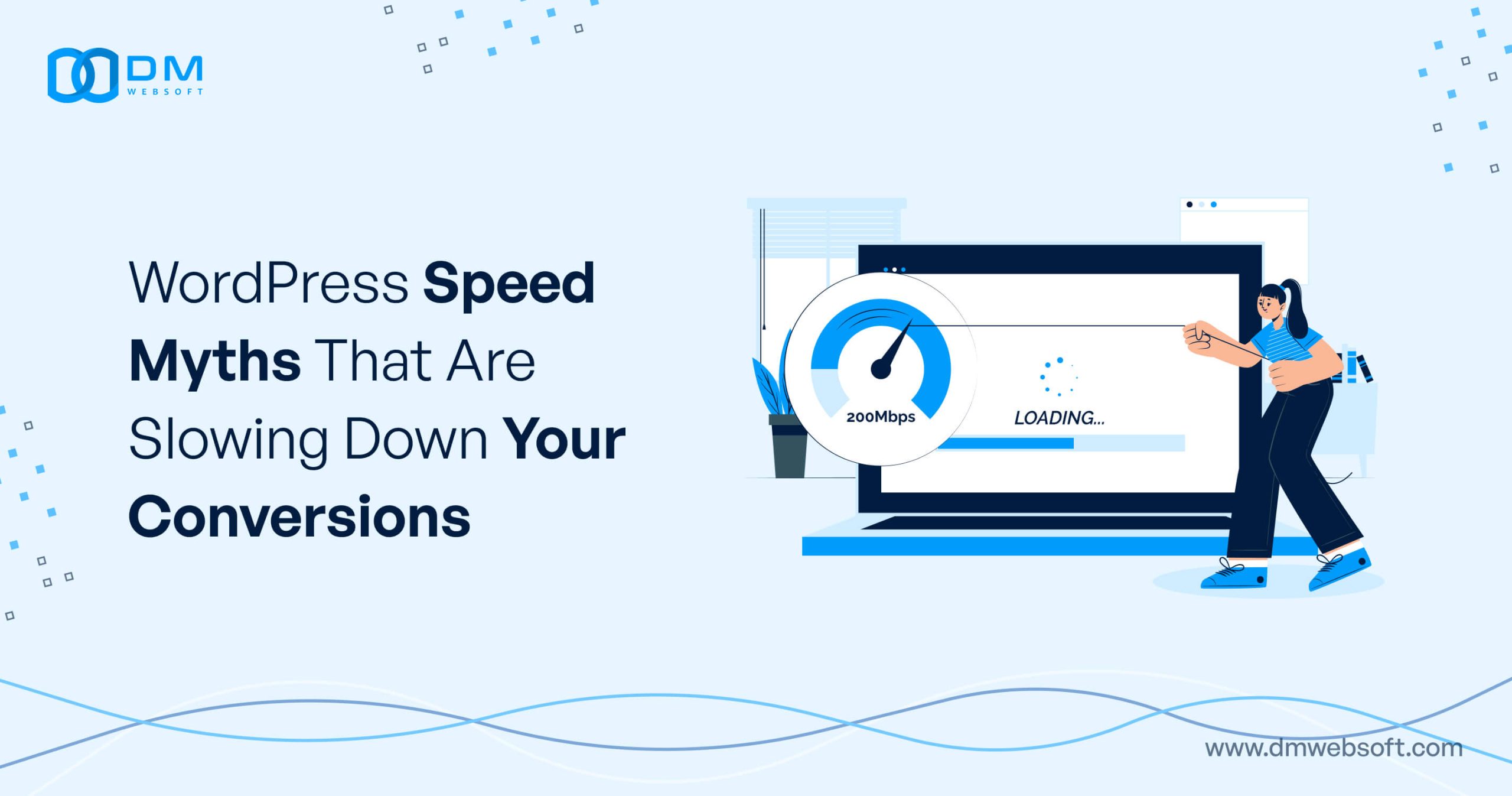DM WebSoft LLP exceeded our expectations! Their seasoned team of experts delivered a website that perfectly captures our brand essence. Their 15+ years of experience truly shine through in their exceptional web development skills.
Beyond Bubble and Webflow: Unconventional No-Code Tools That Are Changing the Game

TABLE OF CONTENT
Introduction
Why Go Beyond Bubble and Webflow?
Unconventional No-Code Tools That Are Changing the Game
The Rise of AI and Automation in No-Code Development
No-Code for Advanced Use Cases: Going Beyond Basic Websites
How to Choose the Right No-Code Tool for Your Business
The Role of No-Code in AI-Powered Automation
No-Code vs. Low-Code: Understanding the Key Differences
Industries Benefiting from No-Code Development
Conclusion: The Future of No-Code is Bigger Than Just a Few Platforms
Get in Touch
Introduction
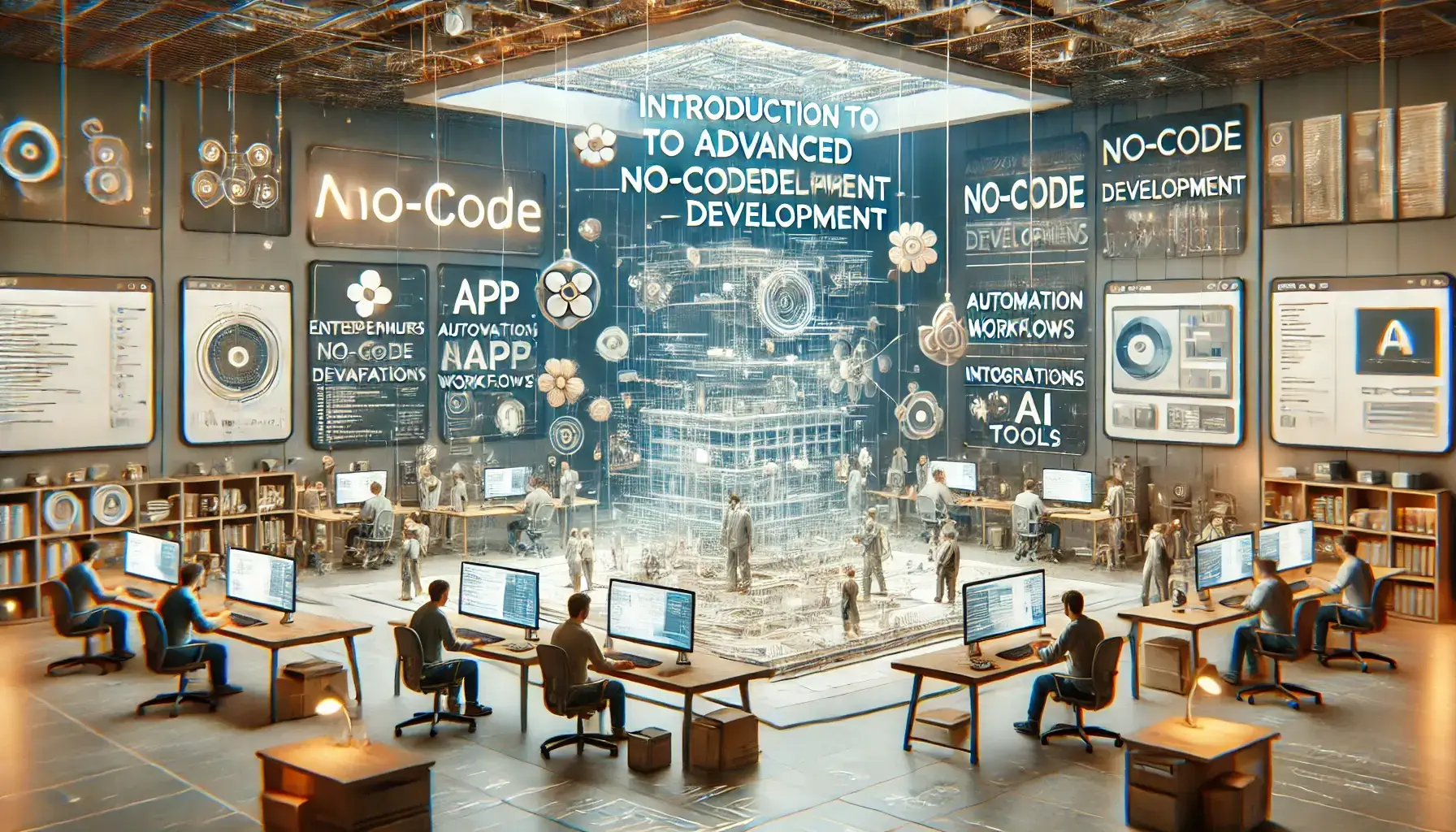
No-code development has increased multifold in the last two years, and Bubble and Webflow are at the forefront as two of the most popular platforms. Bubble enables people to create sophisticated web applications without code, and Webflow enables people with high-level design control to create stunning sites. Both solutions have enabled thousands of entrepreneurs and companies to create usable products without developers or a line of code.
No-code development is far more than Webflow and Bubble, though. With newer tech, newer no-code platforms with a focus on AI-powered automation, enterprise software, mobile app development, and workflow optimization are emerging to take up gaps where the earlier no-code platforms lack. These alternative tools give you greater flexibility, scalability, and functionality where traditional no-code platforms are constrained.
For businesses looking to develop bespoke applications, automate workflows internally, or design AI-powered solutions, there is a need to look at a broader range of no-code tools. Familiarizing oneself with the choices can allow businesses to choose the right platform that best fits their specific needs and long-term goals.
At DM WebSoft LLP, we specialize in navigating startups and businesses through the evolving no-code landscape so that they select and implement the most suitable tools for their projects. In this blog, we’ll cover lesser-known but very powerful no-code tools, their unique characteristics, and how they’re shaping the future of digital innovation.
Why Go Beyond Bubble and Webflow?
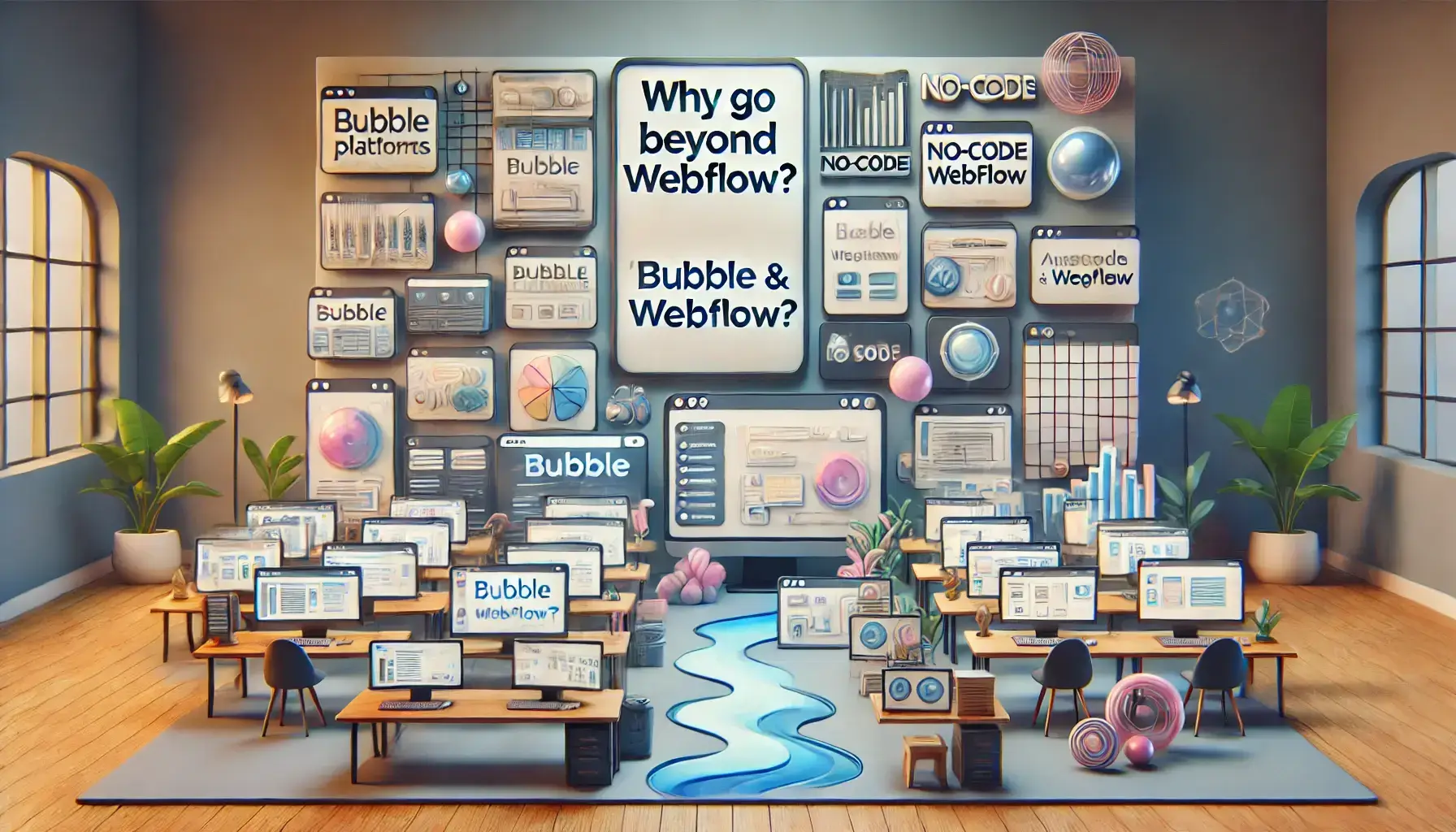
While Bubble and Webflow disrupted no-code development, they are not suitable for all applications. Most companies need functionality more than web application development and database-driven web applications. Below are some of the most essential reasons to look for alternatives to these no-code platforms:
- Industry-Specific Application Specialization: There are industry-specific no-code solutions like healthcare, finance, education, or logistics. Enterprise-level solutions like Retool and AppGyver offer solutions that are internally business application-oriented, hence more suitable for organizations that need industry-specific capabilities.
- AI and Automation Features: Automation is part of current business processes. While Bubble and Webflow offer basic integrations, advanced no-code platforms like Make (Integromat), Landbot, and Xano offer AI-based automation, API management, and workflow optimization.
- Mobile App Development Without Coding: Bubble and Webflow are web application-optimized, but companies who wish to develop native iOS and Android apps need to look for solutions like Thunkable, FlutterFlow, and Adalo, which offer more control over mobile functionality.
- Scalability and Performance Needs: While Bubble and Webflow are ideal for startups, some companies need more scalable architecture. Solutions like Xano (backend development) and AppGyver (enterprise solutions) are built to support large-scale applications and heavy business logic.
- Building Internal Business Tools Efficiently: Companies who need internal dashboards, CRM systems, and admin panels can use solutions like Retool, Glide, and Pory, which offer pre-built components for quick business tool development.
Looking for alternatives to these no-code platforms allows companies to have the right balance of functionality, scalability, and industry-specific needs to achieve long-term success.
Unconventional No-Code Tools That Are Changing the Game

The no-code universe keeps changing, and new tools pop up quite frequently to solve some software development, automation, and business process management issues. Below are some lesser-known but very powerful no-code tools that are more powerful than Bubble and Webflow:
- Glide: Perfect for inventory control, employee management, and customer relationship management (CRM) software.
- Thunkable: No-code mobile app development platform for building native iOS and Android apps. Offers drag-and-drop UI design, workflow logic, and API connectivity and is an excellent platform for mobile-first enterprises.
- AppGyver: No-code enterprise-grade app solution that delivers fully customizable business applications. It offers backend integration, automation of logic, and database administration for businesses with intensive software demands.
- Retool: No-code platform to build internal business tools such as admin panels, customer support pages, and data visualization systems. It is used extensively by companies for managing operations.
- Xano: Very powerful no-code backend application development platform allowing businesses to create scalable APIs, database management, and sophisticated logic integration. Most suitable for large apps with gigantic backend infrastructure requirements.
- Landbot: AI-driven chatbot platform allowing companies to create conversation flows for customer support, sales, and engagement.
- Softr: Softr allows users to create web applications, client portals, and marketplaces on top of Airtable as their backend, It’s a great alternative for businesses that require directory-type apps or custom data-driven websites.
- Pory: No-code platform for creating membership directories, job boards, and community-driven sites. It’s a great Webflow alternative for more database-driven apps.
These no-code platforms are changing software development for businesses by offering custom solutions that surpass typical web development, and they are well worth investigating in most industries and applications.
The Rise of AI and Automation in No-Code Development
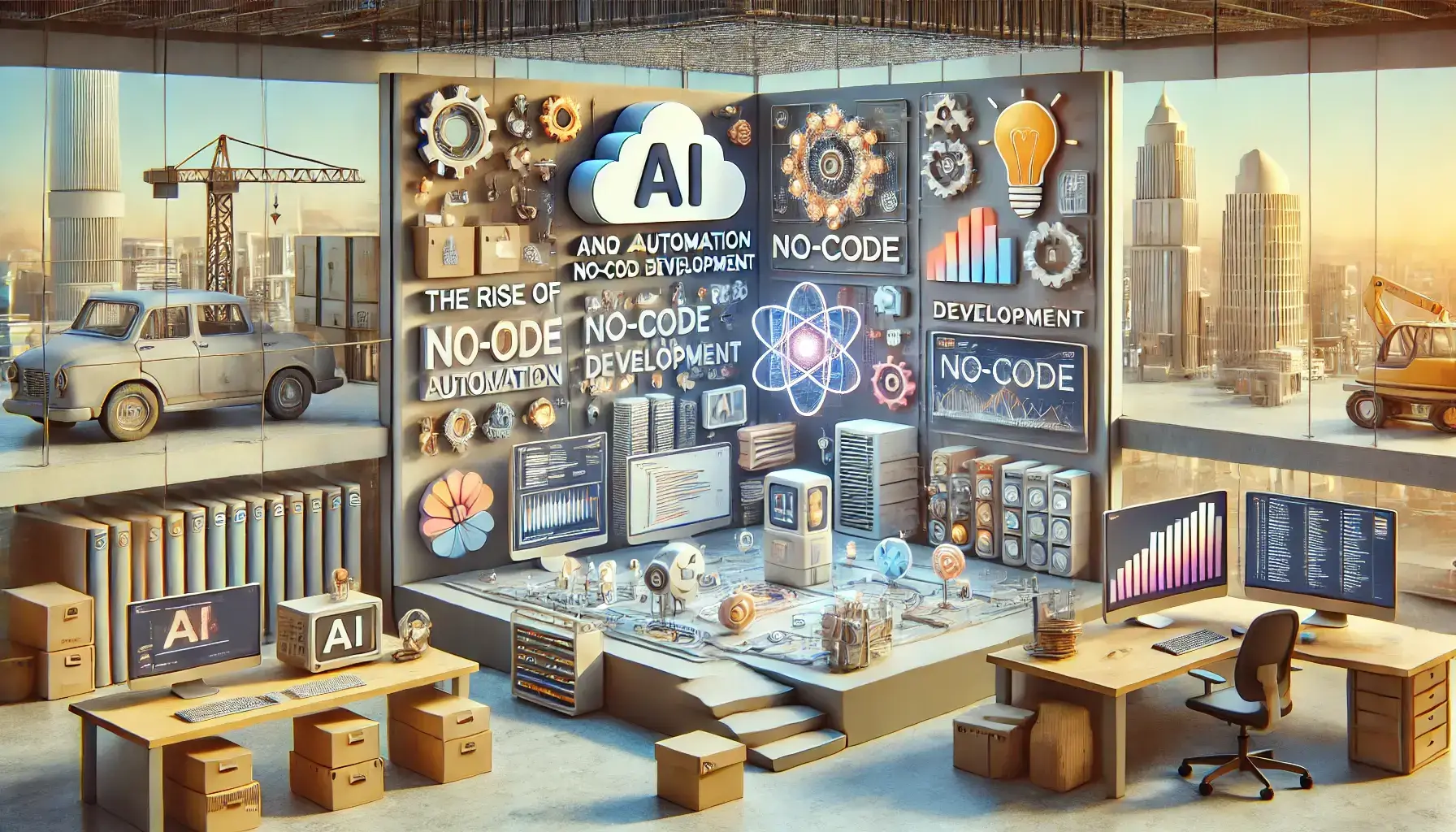
As businesses call for increased efficiency and automation, AI and machine learning capabilities are being infused into most no-code platforms. In contrast to traditional automation based on simplistic rule-based action, AI-based no-code platforms enable businesses to forecast outcomes, sort through vast data sets, and automate decisions.
AI-based no-code platforms such as Make (Integromat) and OpenAI integrations are empowering businesses to automate mundane processes, enhance customer experiences, and simplify workflows without having to write complex algorithms.
For example:
- AI-powered chatbots can engage customers in real-time via questions, bookings, and sales transactions.
- Auto-data analysis software can track business reports and customer interactions and facilitate data-driven decision-making for teams.
- Email marketing software powered by AI can automate outreach campaigns and lead generation campaigns.
- This no-code AI-powered development is allowing small, medium, and large-sized businesses in every sector to implement intelligent automation, lower operational costs, and enhance departmental productivity.
DM WebSoft LLP helps organizations to leverage AI-powered no-code tools to automate workflows, optimize processes, and accelerate digital transformation programs.
No-Code for Advanced Use Cases: Going Beyond Basic Websites
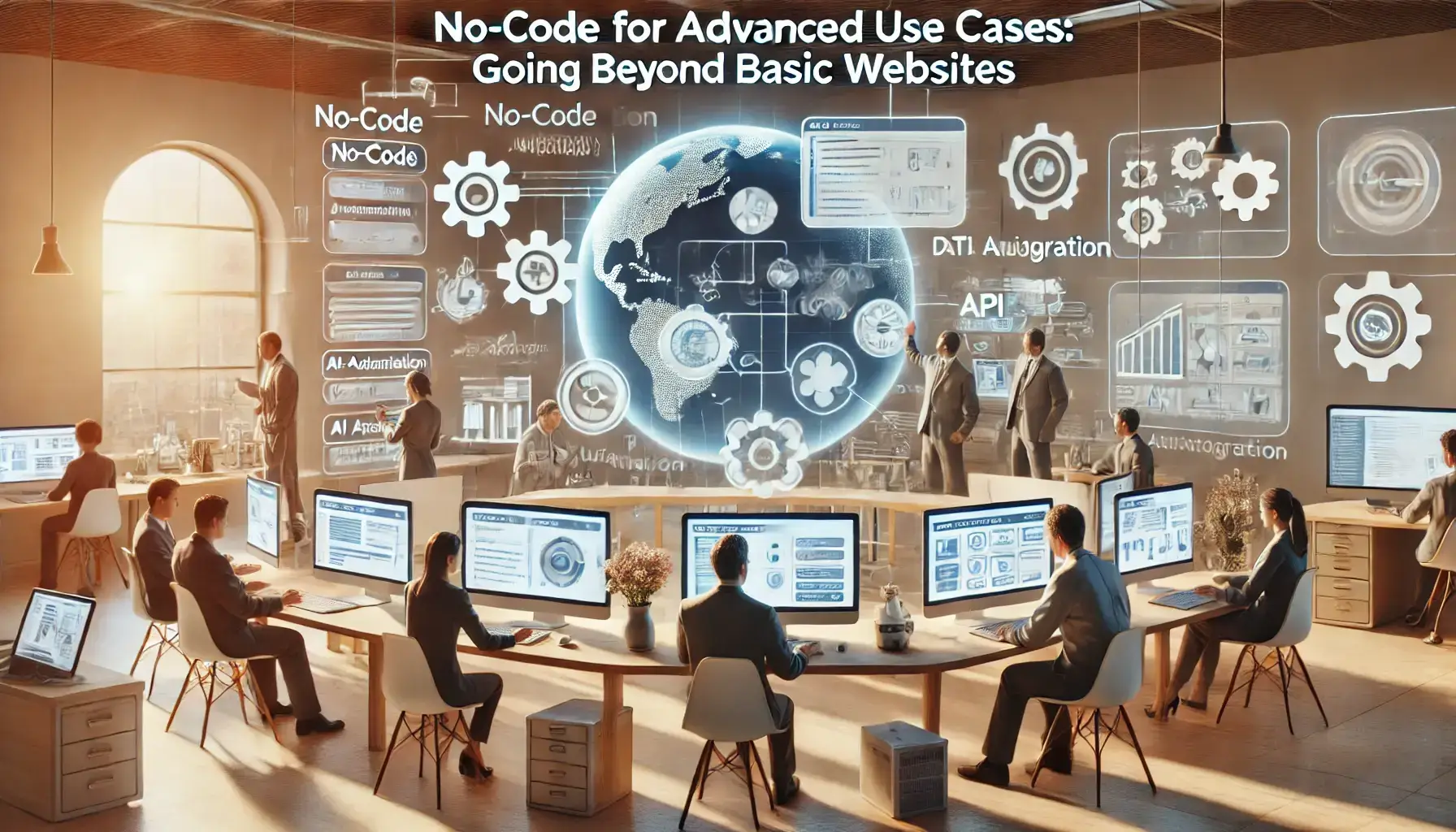
No-code development is typically associated with the development of basic websites and web applications, but it can do a lot more than that. No-code platforms are being used by companies today to develop SaaS applications, AI tools, automation workflows, and enterprise software. With advancing technology of no-code, its application in highly complex, specialized business environments is increasing.
No-Code for SaaS and Business Applications
A number of startups are using no-code to develop Software-as-a-Service (SaaS) applications that offer subscription-based solutions to customers. While Bubble and Webflow are typically used for the same, apps like Xano, AppGyver, and Softr provide more backend support, better handling of logic, and integrations that enable SaaS development at scale.
For instance, Xano allows businesses to develop strong APIs and manage monster databases without using traditional development. This allows startups to deploy SaaS platforms with real-time data processing, automation, and secure authentication—without a custom-coded backend.
No-Code for E-Commerce and Marketplace Solutions
Companies that must develop e-commerce platforms and marketplaces are now using no-code solutions instead of traditional development. Sharetribe and Softr platforms allow entrepreneurs to develop multi-vendor marketplaces like Airbnb or Etsy without writing a line of code.
No-code e-commerce solutions like Shopify and Gumroad have also made online store development, payment management, and inventory tracking automation simple. These platforms also integrate seamlessly with third-party payment gateways, fulfillment services, and analytics tools, allowing businesses to scale affordably.
No-Code for Internal Business Tools and Enterprise Automation
No-code is also transforming enterprise software development by allowing companies to build bespoke internal tools, dashboards, and workflow automation systems. Instead of spending money on expensive, off-the-shelf software, companies are building bespoke solutions to their business needs.
For example, Retool and Glide enable companies to build internal dashboards that connect to databases, APIs, and third-party apps. These platforms allow companies to automate operations, report, and optimize internal workflows—all without the need for an in-house development team.
No-Code for AI-Driven Applications and Chatbots
The most exciting application of no-code development is possibly its integration with AI and machine learning. Landbot, Chatfuel, and no-code platforms based on OpenAI empower companies to develop AI-driven chatbots, data analysis, and personalized user experiences without coding.
No-code AI platforms can be utilized for:
- Customer service automation – AI-driven chatbots can answer inquiries, bookings, and troubleshooting.
- Predictive analytics – No-code AI platforms can examine user behavior and predict trends.
- Content generation – AI-driven no-code technologies can help generate marketing content, automate email campaigns, and personalize user experiences.
The Growing Role of No-Code in Digital Transformation
As companies attempt to provide more efficiency, reduced costs, and enhanced decision-making, no-code solutions are becoming the stars of digital transformation efforts. Whether developing scalable SaaS applications and automating customer experiences or streamlining internal operations, no-code development is helping companies innovate faster and at reduced costs than ever before.
At DM WebSoft LLP, we assist companies across industries to provide innovative no-code solutions that drive growth, efficiency, and automation. Our experience allows organizations to leverage the correct no-code tools to develop scalable, high-performance applications based on their needs.
How to Choose the Right No-Code Tool for Your Business
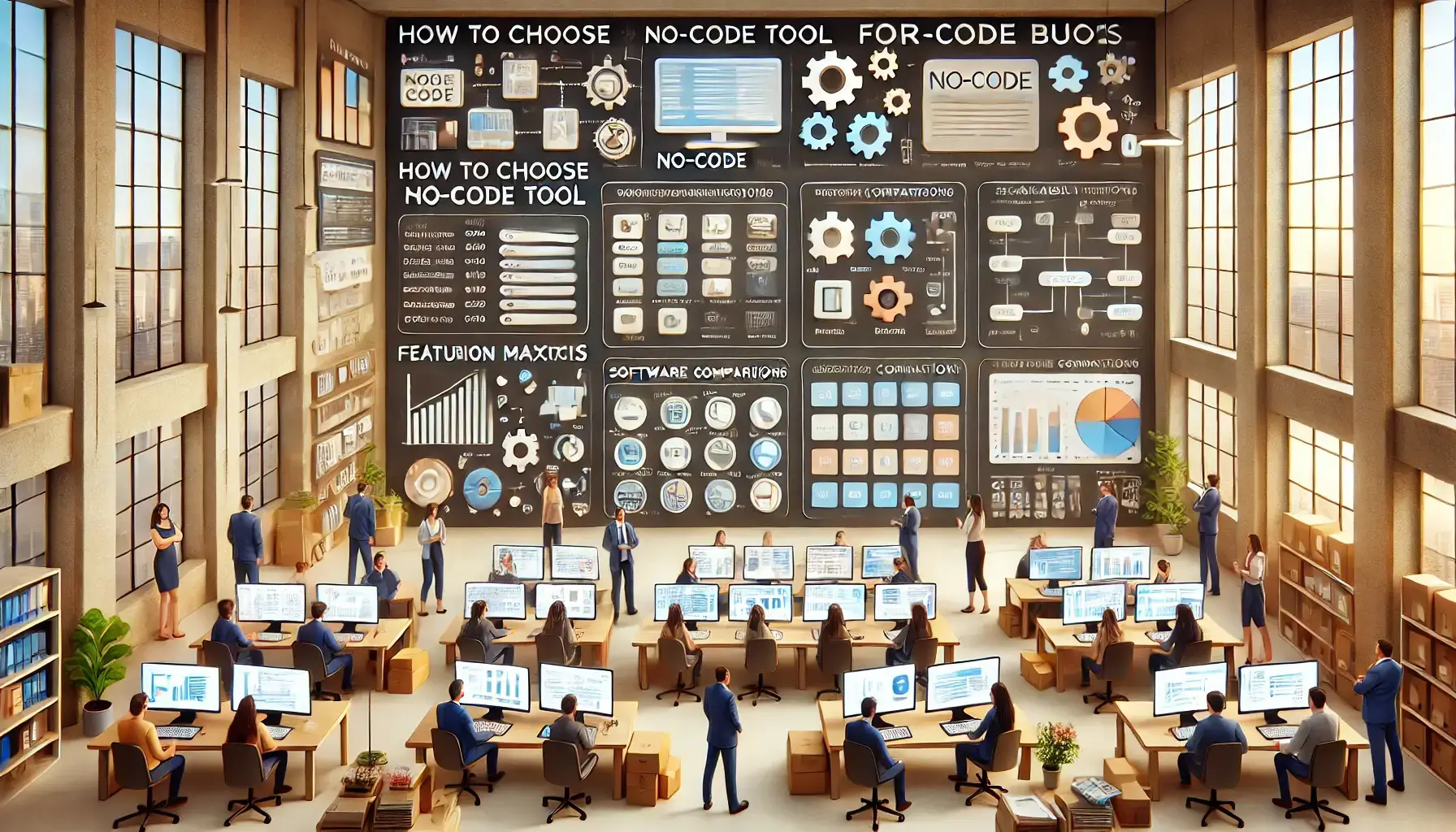
With more and more no-code tools available at your fingertips, it becomes overwhelming to select the perfect tool for your business. Each no-code platform has its strengths, and it becomes essential to choose a tool that is best suited to your specific needs, whether you’re building a web app, mobile app, automation workflow, or internal business application. With the knowledge of the most critical differences between these platforms, businesses can make an informed decision that will lead to scalability, efficiency, and long-term success.
Define Your Project Needs
Before selecting a no-code tool, it’s essential to define what you are building and what functionality is required. Businesses need to consider the following:
- Type of Product: Are you building a web application, mobile application, marketplace, SaaS platform, or automation workflow? Each platform is best for different requirements.
- User Experience & UI Design: If you require an awesome-looking, highly customizable design, platforms like Webflow or Softr are best for the job.
- Backend & Data Management: If your project requires a strong backend to store data and manage workflows, tools like Xano or Airtable are more suitable.
- Integrations & APIs: No-code platforms are not all the same when it comes to third-party application integrations. If huge integrations are required, tools like Make (Integromat) or Zapier may become a necessity.
Consider Scalability & Performance
Most startups begin with no-code tools but end up struggling with scalability issues when their business booms. While tools like Bubble and Adalo are ideal for MVPs, they might not handle large-scale traffic as well as Xano or AppGyver, which offer more backend flexibility and cloud scalability.
- If you’re building a simple MVP, a drag-and-drop tool like Glide may be adequate.
- If you scale to thousands of users, a more robust backend like Xano is recommended.
- If automation is a high priority, tools like Make and Zapier offer seamless workflow integration.
- Selecting a no-code platform that scales over the long term saves businesses from taking expensive migrations down the road.
Evaluate Security, Compliance, and Support
Security and compliance are high-priority factors, especially for companies handling sensitive user data, financial transactions, or healthcare data. Most no-code platforms offer minimal security features, but enterprise-grade security features like role-based access controls (RBAC), encryption, and GDPR compliance are found only on certain platforms.
- For enterprise-class security, tools like Retool and AppGyver offer high-end compliance and security configurations.
- For financial and e-commerce applications, tools like Shopify and Sharetribe offer secure payment integrations.
- For customer support and automation, tools like Landbot and Chatfuel offer end-to-end encrypted chatbot interactions and data protection.
In addition, customer support and community interactions vary between platforms. Bubble, Webflow, and Adalo boast large and active communities, while newer no-code tools may offer little in terms of support materials. Access to developer support, documentation, and community forums is essential to long-term success.
Test Before You Commit
Most no-code platforms offer free trials or basic free plans. Companies should test the ease of use of the platform, feature set, and customizability before committing to a paid plan. Running a small-scale prototype will help you determine whether the tool meets the company’s long-term needs.
At DM WebSoft LLP, we help companies choose the best no-code technology stack, so that they choose platforms that suit the business model, scalability needs, and automation requirements. Our specialists help with tool selection, MVP development, and long-term optimization, so that companies achieve the full potential of no-code development.
The Role of No-Code in AI-Powered Automation
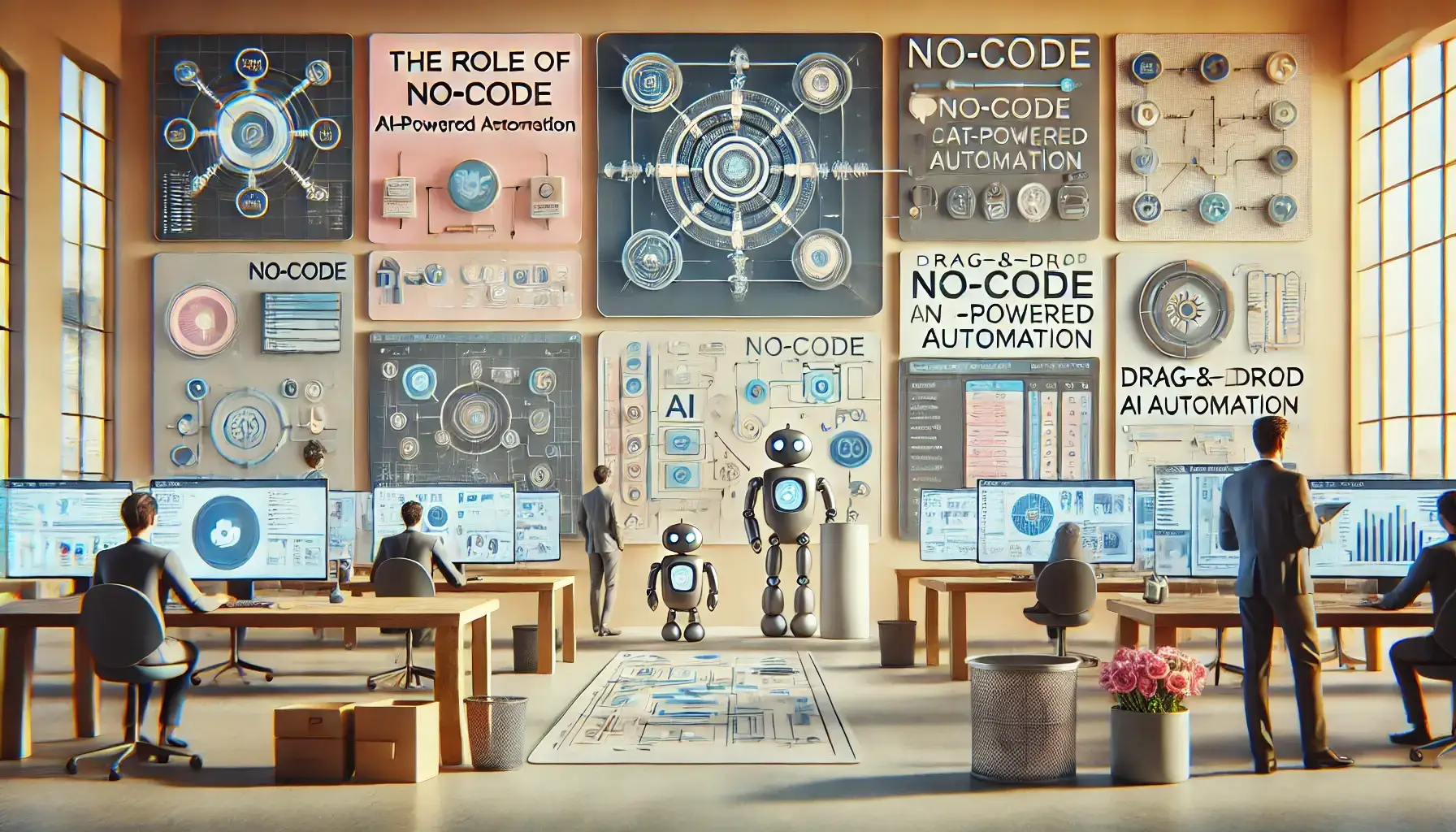
With the help of these tools, businesses can create intelligent workflows that process large amounts of data almost instantly, generate leads automatically, and forecast client behavior.
For instance, Landbot helps businesses to create AI-powered chatbots that can book appointments, qualify leads, respond to user inquiries, and talk with users in natural language without the need for human intervention. Similarly, Make (Integromat) helps businesses to automate processes that include intricate app and service integration and do away with repetitive activities and human data entry.
Another no-code marvel with AI muscle is predictive analytics. Solutions like Obviously AI and Levity enable organizations to analyze trends, predict demand, and make data-driven decisions based on AI without writing a line of code.
This is especially useful in e-commerce, finance, and marketing environments where predictive insights can result in higher conversion rates and enhanced customer engagement.
At DM WebSoft LLP, we enable organizations to build AI-powered no-code solutions to increase efficiency, cut operation costs, and enhance automation capabilities. Be it intelligent chatbots, workflow automation, or predictive data analysis, our specialists make hassle-free AI deployment possible with minimal development.
The most significant advantage of AI-powered no-code platforms is that they enable organizations to automate repetitive and data-driven tasks. Rather than doing customer support, scheduling, or data processing manually, organizations can now leverage AI-powered automation coupled with the utilization of platforms such as Make (Integromat), Landbot, and OpenAI integrations.
These platforms enable organizations to build intelligent workflows that can predict customer behavior, generate leads automatically, and process big data in near real-time.
No-Code vs. Low-Code: Understanding the Key Differences
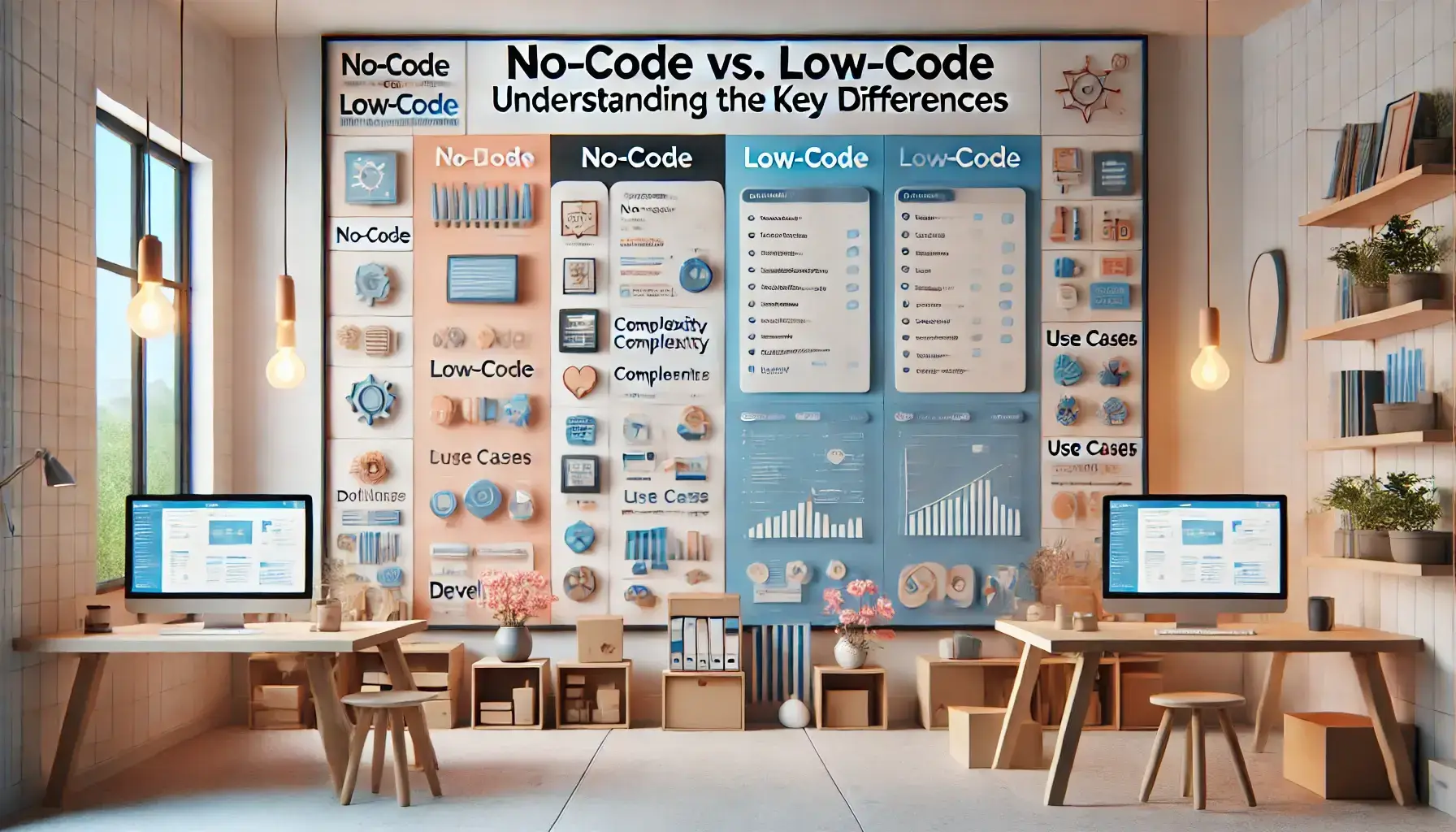
As no-code platforms grow, business looks for low-code options. No-code and low-code both are focused on simplifying software development, but they are for different technical levels and project complexity. A proper understanding of differences between the two can guide business to make the right decision in selecting the right platform.
The largest difference between no-code and low-code is flexibility and customization. No-code products like Bubble, Webflow, and Softr enable apps to be constructed entirely through visual interfaces and no code. They are most ideal for non-tech users, small businesses, and startups that need to deploy working MVPs in a short time frame.
Low-code products like OutSystems, Mendix, and Microsoft PowerApps offer pre-existing building blocks where users can plug in custom coding as well. This is most ideal for business-level apps, large deployment, and companies that need high customization and deep integrations.
Scalability is another very important factor. Although most no-code tools are ideal for expanding businesses, they are always accompanied by restrictions in advanced database management, security, and API flexibility. Low-code platforms provide more control of the backend, which allows businesses to scale apps with custom development when the requirement is there.
Security and compliance come as a top priority as well. No-code tools are likely to contain basic security options, while low-code tools support advanced security setups, compliance controls, and enterprise-level governance. These are the reasons why big enterprises in the banking, healthcare, and logistics sectors utilize low-code for mission-critical apps.
Lastly, business needs define whether no-code or low-code. No-code is the answer to quick MVP creation and automation, and low-code is the answer for businesses that need more customization, intricate logic, and scalability.
DM WebSoft LLP helps businesses decide whether to go with no-code or low-code so that they can choose the perfect technology stack to allow them to thrive in the long run.
Industries Benefiting from No-Code Development
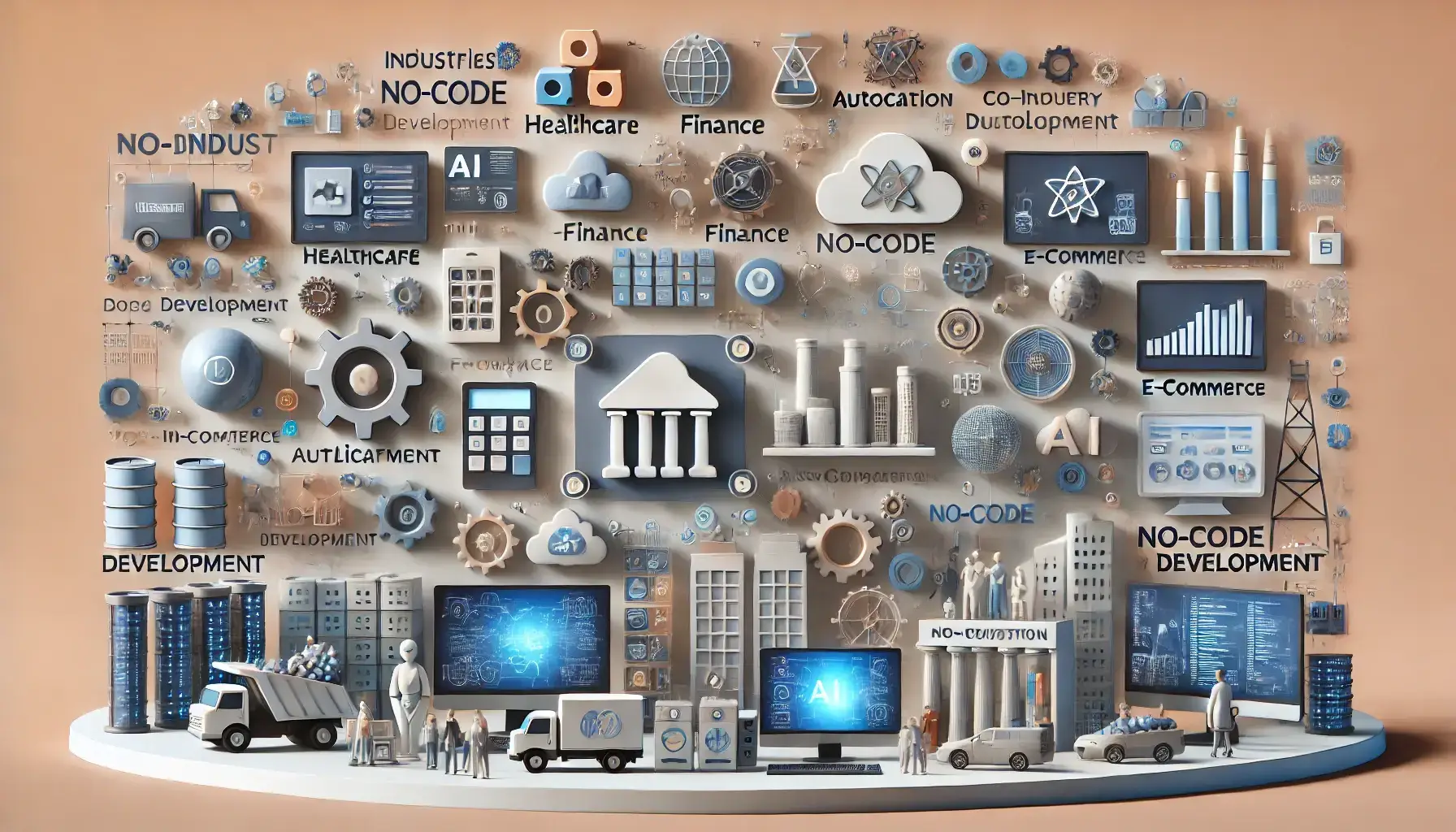
No-code development is no longer the sole domain of startups and SMEs—it is now employed across industries at scale to deliver cost savings, efficiency, and digital transformation. No-code platforms are being applied across healthcare, financial services, e-commerce, and education industry verticals to develop apps faster and respond to changing customer requirements.
Healthcare
No-code development is revolutionizing healthcare for patient management, appointments, and telemedicine applications. Physicians and medical professionals utilize Glide and Softr platforms to develop secure patient databases, automate prescriptions, and integrate telehealth services. HIPAA-compliant no-code platforms enable healthcare companies to safeguard patient data and maximize operational efficiency.
Banking & Finance
No-code is employed by banks and other financial institutions to automate loan underwriting, monitor compliance, and manage risk. Without the need for a full development team, companies can process huge amounts of data, automate reports, and automate client onboarding using Airtable, Xano, and Retool technologies. Fintech companies can also minimize time to market and develop secure financial platforms faster using no-code platforms.
Retail and E-Commerce
No-code has transformed the retail and e-commerce sectors by enabling companies to process sales, automate marketing to specific consumer segments, and manage inventory efficiently. Without the help of technical experts, companies can develop unique storefronts, integrate payments, and automate email marketing campaigns using the Shopify, Webflow, and Gumroad platforms. No-code AI technologies are widely employed by retail companies to monitor consumer behavior and maximize sales strategy.
Education & Distance Education
Educational institutions, colleges, and online course creators utilize platforms like Thinkific, Softr, and Webflow to build interactive learning websites, membership sites, and courses marketplaces. The platforms allow educators themselves to handle student data, automate lesson planning, and offer certification programs—all without custom coding.
Supply Chain & Logistics Management
No-code is employed by logistics organizations to track shipments, route optimize, and enhance supply chain efficiency. Enterprise solutions like Glide and Airtable allow companies to build their own custom logistics dashboards, automate order tracking, and automate inventory workflows without specialized software development. With integration with third-party APIs, companies can connect their no-code logistics apps to real-time sources of data.
No-code is transforming a wide range of industries by assisting companies in lowering the cost of operation, enhancing the customer experience, and taking digital products to market faster.
DM WebSoft LLP partners with organizations from all industries to implement customized no-code solutions for their specific business goals and operational requirements.
Conclusion: The Future of No-Code is Bigger Than Just a Few Platforms

No-code development has evolved far beyond Bubble and Webflow, offering businesses a diverse set of tools tailored to AI automation, mobile app development, backend management, and enterprise solutions. As the demand for faster, cost-effective, and scalable software solutions grows, more companies are turning to unconventional no-code platforms to streamline operations, automate workflows, and build fully functional applications without traditional coding.
The right no-code tool depends on the specific needs of a business. While Bubble and Webflow remain powerful for web apps and front-end development, platforms like Xano, Glide, AppGyver, and Retool provide better backend scalability, automation, and advanced customization. Similarly, AI-driven platforms such as Landbot and Make (Integromat) are transforming how businesses approach customer interactions and process automation.
For startups and enterprises alike, choosing the right no-code solution is essential for ensuring long-term growth, flexibility, and security.
Companies should focus on:
- Matching the platform to their business needs—whether for SaaS, mobile apps, e-commerce, or workflow automation.
- Ensuring scalability—so that the MVP can evolve into a fully functional, market-ready product.
- Integrating security and compliance—especially for data-sensitive industries such as healthcare, finance, and legal services.
At DM WebSoft LLP, we specialize in helping businesses select and implement the right no-code solutions based on their growth strategy, automation needs, and technical requirements. Whether you are launching an MVP, automating internal processes, or scaling a SaaS platform, our team ensures that you use the best no-code technology for long-term success.
As no-code continues to evolve, businesses that embrace new, unconventional tools will gain a competitive advantage—launching faster, iterating more efficiently, and delivering better user experiences without the limitations of traditional development.
If you are ready to explore beyond Bubble and Webflow and want expert guidance in choosing and implementing the best no-code solutions, contact DM WebSoft LLP today to build your next-generation no-code product.
Platforms like Glide, Retool, Xano, Thunkable, and AppGyver offer specialized no-code solutions for different use cases.
No-code platforms like Make (Integromat) and Landbot help businesses automate workflows, reducing manual tasks and improving efficiency.
Yes, platforms like Xano, AppGyver, and Retool provide scalable backends, making them suitable for enterprise-level applications.
No-code is transforming healthcare, finance, e-commerce, education, and logistics by enabling faster software development.
DM WebSoft LLP specializes in no-code development, automation, and AI integration, helping businesses build scalable, efficient digital products.
Get Started Now !
What’s the Process ?
Request a Call
Consultation Meeting
Crafting a Tailored Proposal
Get Started Now !
Real Stories, Real Results. Discover What Our Clients Say

Working with DM WebSoft LLP was a game-changer for our business. Their technical prowess and innovative solutions transformed our online presence. A highly recommended web development agency with a stellar track record.

We are thrilled with the results DM WebSoft LLP delivered. Their deep understanding of web development coupled with years of expertise ensured a seamless and visually stunning website. True professionals!

In a digital age where first impressions matter, DM WebSoft LLP crafted a website that speaks volumes. The team’s attention to detail and commitment to quality set them apart. Thank you for making our vision a reality.

DM WebSoft LLP’s team demonstrated unparalleled expertise. Their ability to navigate complex technical challenges with ease is truly commendable. Choosing them for our web development needs was the best decision.

Exceptional service, unmatched skills! DM WebSoft LLP stands out as a leading web development agency. Their collaborative approach and commitment to excellence make them our go-to partner for all things web-related.

DM WebSoft LLP turned our ideas into a digital masterpiece. The seamless communication and timely delivery of our project showcased their professionalism. Highly impressed with the level of creativity and skill.

Our experience with DM WebSoft LLP was nothing short of amazing. From concept to execution, their team provided top-notch web development services. A reliable partner for businesses looking to elevate their online presence.

DM WebSoft LLP’s team of tech experts is second to none. Their wealth of experience reflects in the quality of their work. Our website not only meets but exceeds industry standards, thanks to their dedication.

Choosing DM WebSoft LLP was the best investment for our web development needs. Their team’s proficiency, coupled with a customer-centric approach, made the entire process smooth and enjoyable. A pleasure to work with!



